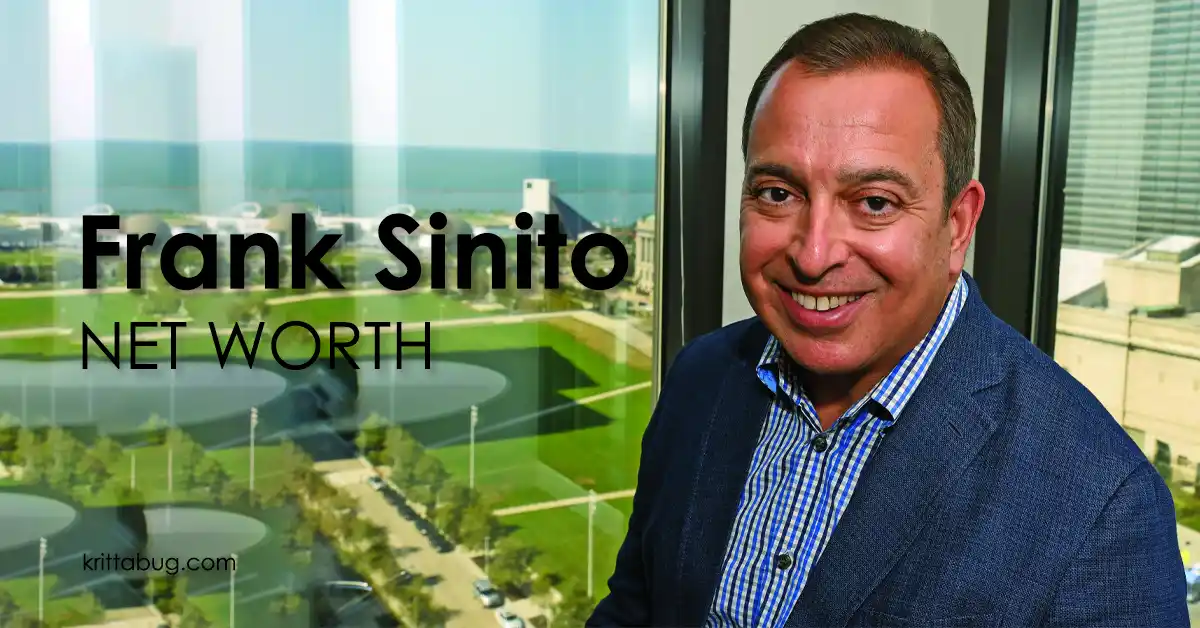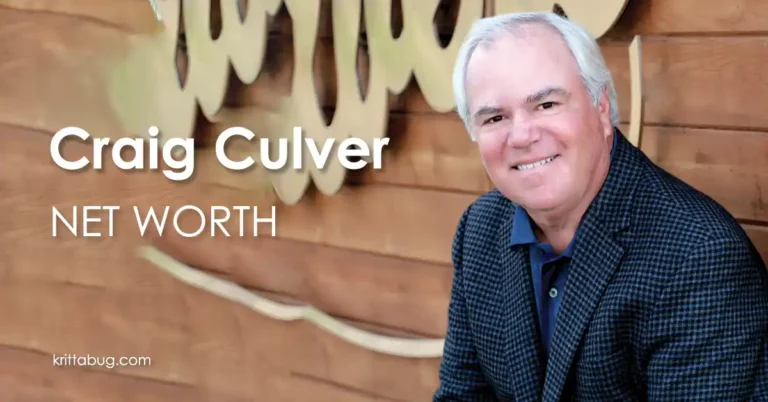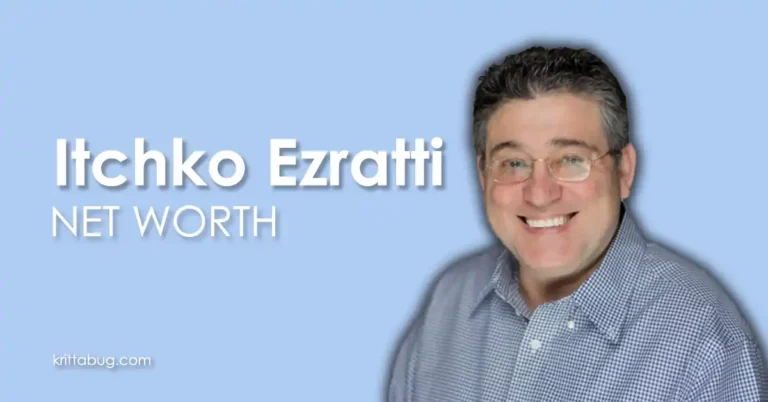Frank Sinito Net Worth: Estimated $100M–$200M (directional, private, model-based).
Curious about Frank Sinito net worth and the story behind it? You’re not alone. In Cleveland real estate, few names spark more interest, growth, and debate. This guide hooks you with clarity: who he is, how he built wealth, and what lessons matter now.
Frank Sinito built The Millennia Companies into a coast-to-coast owner of apartments and landmark assets like Key Tower.
Deals, renovations, and hospitality brands shaped his trajectory.
You’ll see how property income, financing spreads, and equity gains translate into estimated wealth today.
Keep reading for a clean breakdown—numbers, timelines, and facts—plus a practical take on risk, opportunity, and what comes next.
Why trust this? We cite respected sources on major transactions and portfolio scale, then model reasonable estimates. You get concise, jargon-free insights in one place. Expect a forward-looking view: where the portfolio is headed, and how shifting from subsidized housing to market-rate assets may affect Frank Sinito net worth. If you care about entrepreneurial playbooks, family partnerships, and resilient investing, this article was written for you.
Who Is Frank Sinito?
Who is Frank Sinito, and why does his name keep surfacing in real-estate conversations? Frank Sinito is a Cleveland-based developer and founder of The Millennia Companies, known for acquiring, rehabilitating, and managing large multifamily portfolios and historic properties. He rose from small acquisitions to headline deals, including the Key Center complex anchored by Key Tower, while partnering closely with his spouse, restaurateur and operator Malisse Sinito.
In practice, he’s a portfolio builder: finding distressed or under-managed assets, structuring financing, stabilizing operations, and extracting long-term value. That mix—operations, capital markets, and design—defines his brand. It also explains why observers track his moves through both housing cycles and hospitality expansions like Marble Room, Il Venetian, and LockKeepers.
For readers, context matters. He operates at the intersection of public-private programs, tax credits, and conventional lending. That creates opportunity but invites scrutiny. Understanding that balance helps you assess the sustainability of his strategy, the risk profile of his holdings, and the durability of projected returns. If you’re mapping a similar path, study his timing, partnerships, and discipline. For investors, patience. Wins.
Frank Sinito net worth Net Worth in 2025
Estimating Frank Sinito net worth in 2025 requires a sober, source-driven approach. Real-estate wealth is often private, diversified, and encumbered by debt; the right lens is enterprise value minus liabilities, not headline purchase prices. Here, we triangulate from public deals (like Key Center), portfolio size, hospitality interests, and typical valuation multiples for stabilized assets. We also consider 2024–2025 developments affecting cash flow and risk.
What does that mean for readers? We present a conservative range, updateable as filings, sales, or lender data surface, and we separate income from net worth. Income reflects management fees, promote interests, hospitality profits, and dividends; net worth reflects equity value after debt and taxes. Importantly, investigations or portfolio pivots may alter both.
Below, you’ll find a year-by-year view of estimated earnings and changes in equity value, designed to show momentum rather than hype. Use it as a directional model, not a promise. Then compare with deal news and market conditions to refine your own view of Frank Sinito net worth. Figures are rounded and stress-tested for sensitivity. Analysis.
Estimated Earnings by Year (Illustrative, USD)
| Year | Estimated Pre-Tax Earnings | Notes |
| 2016 | $10M–$15M | Portfolio scaled past 20k affordable units. |
| 2017 | $12M–$18M | Key Center acquisition; repositioning period. |
| 2018 | $15M–$22M | Stabilization, hospitality growth. |
| 2019 | $18M–$25M | Leasing momentum; fee income. |
| 2020 | $8M–$14M | COVID impact on hospitality. |
| 2021 | $12M–$18M | Reopening, refinancing activity. |
| 2022 | $14M–$20M | Major office lease wins at Key Tower. |
| 2023 | $12M–$18M | Mixed macro conditions. |
| 2024 | $10M–$16M | Compliance costs; federal scrutiny. |
| 2025 | $11M–$17M | Portfolio pivot toward market-rate assets. |
Directional 2025 net-worth range: private; modeled at $100M–$200M based on portfolio scale, leverage, and comps. Unaudited; subject to change with transactions.
Frank Sinito net worth, Bio, Income & Interesting Facts
Here’s a concise snapshot before you dive into the details. The table compiles public basics and hard-to-find context in one tidy view—useful for quick referencing or fact-checking. Where public records are unavailable, we flag estimates and keep assumptions conservative. You’ll also see primary income channels and personal notes that shape decision-making, such as long partnerships and hospitality ventures. This one-page profile complements the earnings timeline above and the deeper narrative below on operations, strategy, and risk. Consider it a starting point for your own research into Frank Sinito net worth.
| Frank Sinito net worth Bio | Details |
| Real Name | Frank T. Sinito |
| Salary | Private; varies by distributions/bonuses (owner income) |
| Net Worth | Estimated $100M–$200M (directional, private, model-based) |
| Date of Birth | Not publicly disclosed |
| Age | Not publicly disclosed |
| Birth Place | Not publicly disclosed (Cleveland-based executive) |
| Gender | Male |
| Schooling | Not publicly disclosed |
| Nationality | American |
| Height | Not publicly disclosed |
| Weight | Not publicly disclosed |
| Status | Married |
| Partner | Malisse Sinito, restaurateur (Savour Hospitality/LockKeepers/Marble Room/Il Venetian) |
| Earning Source | Real estate ownership/operations, fees, promotes, hospitality profits, recapitalizations |
| Hobbies | Not publicly detailed; associated with placemaking and dining concepts |
| Profession | Founder/Owner, The Millennia Companies (real estate developer/operator) |
How Does Frank Sinito Make Money?
To understand Frank Sinito net worth, follow the cash. Frank Sinito earns primarily through real estate ownership, operations, and financing spreads. First, operating income: stabilized apartments, office, and hotel assets produce net operating income (NOI) that flows to owners after expenses and reserves. Second, asset-management and development fees: sponsors collect fees for sourcing deals, arranging capital, and overseeing projects. Third, promote or carried-interest: when projects beat hurdle returns, sponsors share disproportionate upside. Fourth, equity appreciation: value-add renovations, leasing, and better debt terms can lift equity even if properties aren’t sold. Fifth, hospitality: restaurants such as Marble Room, Il Venetian, and LockKeepers contribute brand value and profits with more volatility than stabilized real estate. Sixth, recapitalizations: refinancing after improvements can return cash to owners while maintaining stakes. Seventh, dispositions: selective sales realize gains that may be recycled into new acquisitions or used to de-leverage. Finally, dividends or distributions from operating subsidiaries and occasional side investments diversify income. Track these levers through filings, lender statements, or credible local reporting; they explain quarter-to-quarter noise and multi-year compounding. For credibility.
Frank Sinito family net worth
Family dynamics matter when you estimate Frank Sinito net worth. Real-estate structures often involve family trusts, LLCs, and operating companies, so the economic pie may be shared across the Frank Sinito family through ownership, salaries, and dividends. Public clues help: restaurant ventures operated by his spouse, Malisse, suggest parallel streams of brand equity and cash flow; corporate bios list adult children in operational roles at Millennia; and deal press shows joint participation in hospitality assets. Together, that points to a household balance sheet broader than any single individual statement.
Practically, a family approach can lower risk and accelerate execution. It pools management capacity, diversifies income, and strengthens bank relationships. It also complicates valuation for outsiders, because profits, carried-interest, and owner draws may move between entities or be reinvested. The list below outlines likely components that feed into an estimated family net-worth range: operating companies, property partnerships, hospitality brands, personal real estate, and liquid investments. Use it to map how wealth is created, retained, and protected across economic cycles, and to separate enterprise value from personal liquidity.
What We Learn from Frank Sinito?
Big picture: the most useful lessons are process, not personality. First, buy with a value-creation plan, not a hope. Distress without an execution engine is just risk; distress with the right team is an option on future cash flows. Second, control operations. Renovations, leasing, and tenant experience drive NOI, which ultimately drives valuations. Third, master capital. The spread between stabilized cap rates and your total cost of capital is where wealth compounds. Fourth, be local and scalable. Deep local knowledge lets you move decisively; platforms and partnerships let you grow. Fifth, diversify engines—own, operate, and brand. Restaurants may be cyclical, but they can energize districts and lift nearby assets. Sixth, accept scrutiny. Compliance and transparency are part of doing business at scale. Seventh, keep a long clock. Real estate rewards patient, repeatable processes more than one-off wins.
If you’re benchmarking Frank Sinito net worth, study the playbook above and pressure-test it against your market. The goal isn’t to copy Frank Sinito; it’s to apply durable principles with your constraints: capital, time, partners, and risk tolerance.
10 “Learn” Quotes — Frank Sinito
Ready for quick, memorable takeaways you can pin to your desk? Below are ten original, lesson-style quotes that distill this article into action you can use today. Each line turns a complex real-estate concept into a practical reminder about capital, timing, and operations. They won’t tell you Frank Sinito’s next move, but they’ll sharpen the moves you make as you build assets, teams, and systems. If you’re tracking Frank Sinito net worth, think of these as guardrails that keep your analysis honest and your execution focused.
- “Buy the problem you can run, not the story you can sell.”
- “NOI is the language; occupancy and expenses are the grammar.”
- “Great debt is a tool; sloppy debt is a trap.”
- “Renovate what tenants feel first.”
- “A lease you can keep beats a rent you can’t get.”
- “Cash-out refis are bridges, not beaches.”
- “Hospitality creates gravity; gravity attracts tenants.”
- “Compliance is culture under pressure.”
- “Partnerships borrow trust; execution earns it.”
- “Compounding loves boring systems.”
Early Life of Frank Sinito
Early Life sections are most useful when they connect background to behaviors. In Frank Sinito’s case, the through-line is work ethic plus curiosity about how buildings operate—how rent becomes payroll, debt service, and reinvestment. Early roles exposed him to the nuts and bolts of property maintenance, tenant relations, and the simple math of income statements. That proximity to operations mattered: it turned abstract finance into hands-on problem solving. Soon came small acquisitions and partners who were comfortable rolling up sleeves, not just writing checks.
Another thread is hospitality. The decision to open and refine restaurants alongside real-estate projects trained a product sensibility—lighting, arrival, service, acoustics—that later carried into lobby renovations and placemaking. These habits created a bias toward value-add work: take an underperforming asset, fix what guests and tenants feel first, and watch the metrics respond. Whether you’re a new investor or a seasoned operator, that lesson travels well: learn the basics, build partnerships, and keep a service mindset. Life stories rarely predict outcomes, but they do explain enduring preferences: management, long horizons, and an appetite for turnarounds.
Education — Frank Sinito
Education, in this context, means more than diplomas. For builders of operating companies, the core curriculum is finance, construction, leasing, and leadership—learned by doing and refined by mentors. In interviews and company bios, what stands out around Frank Sinito is the applied learning loop: analyze, acquire, operate, and iterate. That’s an education model many entrepreneurs recognize: short feedback cycles, real customers, and accountability to lenders.
If you’re designing your own path, start with fundamentals: accounting that ties to cash; project management that ties to schedules; and legal concepts—entities, contracts, compliance—that protect downside. Add market literacy: read local zoning, follow rent comps, and study cap-rate movements. Layer in hospitality skills if placemaking is part of your thesis: service design, F&B economics, and brand storytelling. Finally, build your advisory bench early: tax, legal, debt, and construction experts who shorten mistakes. Whether through formal programs, certificates, or curated apprenticeships, aim for a practical transcript that compounds over decades. Education done this way explains why some platforms scale while others stall, and why decision quality improves even when markets whip. Consistently.
Career — Frank Sinito
Career snapshots help you see inflection points. After early acquisitions, Frank Sinito founded The Millennia Companies and scaled into one of the country’s larger affordable-housing owners and managers. A pivotal move arrived in 2017 with the acquisition of Cleveland’s Key Center complex anchored by Key Tower, signaling a bolder push into high-profile assets and placemaking. By the mid-2010s, trade coverage tallied 20,000+ affordable units under management, reflecting a repeatable platform for value-add and compliance-heavy operations.
Later, the strategy widened: hospitality concepts like Marble Room, Il Venetian, and LockKeepers extended the brand and activated downtown real estate. Recent years also brought scrutiny and change. Federal agencies examined parts of the business, and the firm announced shifts away from portions of the subsidized portfolio toward market-rate investments, while leadership adjusted day-to-day roles. That combination—platform scale, landmark assets, hospitality cross-over, and regulatory pressure—defines the current chapter.
For readers, the through-line is disciplined opportunism: buy well, operate tightly, reinvest, then re-underwrite when facts change. In other words, a Career driven by details, not slogans.
Frank Sinitos’ Wife and Family (with family-tree table)
Family partnerships are central to this story. The hospitality arm—Savour Hospitality—was built and led by Malisse, whose restaurants have become part of Cleveland’s dining identity. That brand energy supports placemaking around office and residential assets, while operating rigor from hospitality feeds back into real-estate service standards. Inside the housing platform, next-generation leadership is visible in operational roles, including Frank Sinito Jr., a regional vice president overseeing thousands of units across multiple states. The result is a networked enterprise where family members drive parallel lanes—restaurants, property management, corporate leadership—yet share common design and service principles.
When you map relationships for research, keep it practical: identify who influences capital allocation, who controls operations, and who stewards brand. That lens explains decision speed, risk appetite, and accountability. Below is a family-tree-style table to organize roles at a glance; it’s not exhaustive and avoids personal details, but it shows how responsibilities cluster and where governance overlaps may occur. Use it to understand how ideas and execution move through the organization, and why family trust can be a competitive advantage when cycles turn.
Family Tree (Simplified)
Frank Sinito’s Social Media Presence
Curious where to follow Frank Sinito online? Public-facing activity tends to appear through brand channels more than personal feeds. Start with The Millennia Companies for corporate news, major transactions, and community updates. Then check hospitality accounts—Marble Room, Il Venetian, and LockKeepers—for openings, events, and philanthropic tie-ins. Local business outlets and civic organizations often tag principals in award posts or redevelopment milestones; those mentions can be more informative than sporadic individual posts.
If you’re researching, verify handles carefully; high-profile projects invite look-alikes and fan pages. Compare usernames to official websites, cross-reference contact information, and watch for consistent branding. When platforms change algorithms or prioritize different content types, follow the channels that carry hard news: press rooms, trade publications, and city business journals. Set alerts for specific properties—Key Tower, the Garfield Building, and active redevelopment efforts—so you catch leasing moves or construction milestones.
Bottom line: think ecosystem, not a single account. Track the companies, properties, and restaurants to understand strategy and timing in real time. That approach offers more signal, less noise, and a window into the next chapter for Frank Sinito.
Frank Sinitos’ Awards and Recognitions
Recognition in real estate often follows outcomes more than trophies. In Northeast Ohio, visibility arrived through high-profile acquisitions and redevelopments, frequent coverage by business journals, and civic contributions tied to downtown revitalization. Trade and local media have profiled the team behind The Millennia Companies and highlighted landmark moves—most notably the purchase and renovation plans for the Key Center complex. Hospitality brands created by the family have earned dining accolades and “best of” nods that reinforce the broader placemaking thesis.
While awards are nice, readers should track signals that correlate with durable value: major leases signed, successful refinancings, historic-tax-credit wins, preservation honors, and community impact milestones. Those markers say more about execution than a shelf of plaques. Look, too, at recognition granted to collaborators—the architects, contractors, lenders, and nonprofit partners—because complex projects succeed alone.
In short, the award story is this: outcomes over ornaments. Follow the deal flow, the tenant mix, and the balance between ambition and delivery. That’s how you’ll understand what recognition means in a market shaped by cycles and scrutiny, and how it frames the next moves for Frank Sinito.
Challenges and Comebacks
Every growth story includes rough chapters. For The Millennia Companies, recent years brought heightened scrutiny: federal agencies reviewed compliance at subsidized properties, the company faced restrictions on new HUD contracts, and media attention intensified around property conditions in select markets. In late 2024, federal agents searched a Cleveland-area residence tied to leadership; statements at the time emphasized cooperation and noted that no charges had been filed.
Operationally, the firm signaled a pivot—selling portions of its affordable-housing portfolio and leaning into market-rate and mixed-use opportunities. That shift aims to simplify compliance exposure, improve capital flexibility, and focus on assets where renovations and leasing can move the needle. The comeback test is straightforward: stabilize operations, maintain lender confidence, execute leasing plans, and deliver credible timelines on active developments.
For readers, the lesson is resilience with transparency. Track verifiable milestones and place extra weight on third-party evidence—leases signed, permits issued, inspections closed. Challenges don’t end a platform; they force clarity. The next few years will show whether portfolio pruning and strategy resets translate into stronger cash flows and lower risk for Frank Sinito.
Final Words
If you came for a number, you also earned a framework. Frank Sinito net worth isn’t a static headline; it’s a moving estimate that rises and falls with occupancy, rates, lender covenants, and execution. The smarter question is what will change it next? Watch the mix between market-rate and subsidized assets, the pace of renovations, the cost of debt, and leasing momentum at marquee properties. Pay attention to hospitality performance, too; it can amplify neighborhood value and deal flow.
Want a practical playbook? Build conservative models, pressure-test assumptions, and update them when new filings or leases land. Use independent sources for verification and keep an eye on leadership bandwidth as roles evolve. Above all, separate enterprise value from personal liquidity, because paper gains are not spendable. Do this, and you’ll understand why some fortunes compound while others stall.
That’s the lens we apply here: numbers with context, optimism with caution, and curiosity about what comes next for Frank Sinito.
FAQs (people also ask)
1) What is Frank Sinito net worth in 2025?
Private. Directional model: $100M–$200M, based on portfolio scale, leverage, and comps; subject to transactions and market moves.
2) Did he really buy Key Tower?
Yes. The Millennia Companies acquired the Key Center complex for about $267.5M in 2017.
3) How big was Millennia’s housing platform at its peak?
Trade coverage noted 20,000+ affordable units owned/managed by 2016.
4) Was there a federal search involving leadership in 2024?
Yes. Federal agents searched a Cleveland-area home; counsel said the company cooperated and no charges were filed at that time.
5) Is the company shifting strategy?
Reports indicate a pivot away from portions of Section 8 holdings toward market-rate investments and leadership changes in 2025.
6) What hospitality brands are associated with the family?
LockKeepers, Marble Room, and Il Venetian, among others.
7) Where can I verify major leases at Key Tower?
See the 2022 Benesch lease announcement (eight floors, ~164k sq. ft.) for a notable example.
Meta Description:
Frank Sinito net worth (2025): private but modeled at $100M–$200M. See year-by-year earnings, income sources, family roles, key deals, and forward-looking risks & opportunities.







